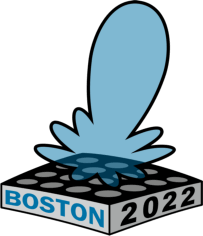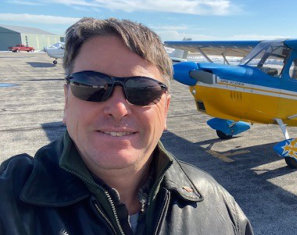2022 IEEE International Symposium
on Phased Array Systems and Technology
Revolutionary Developments in Phased Arrays
11–14 October 2022

Tutorial: T/R Modules and Array Electronics
Part 1: Approaches for the Realization of Phased Arrays for Defense and Civil Applications
Douglas J. Carlson, Senior Vice President of Technology
MACOM Technology Solutions Inc.
Phased Array technology has been a critical enabling technology for defense applications for several decades. Emerging civil communications and sensing applications are actively being deployed. Affordability and performance are the two key driving attributes in the realization of phased array systems. Array architecture options, RF component choices, Transmit/Receive module design and manufacturing technologies are all driven by system performance requirements. A review of trends the underlying semiconductors, packaging and assembly technologies will be presented with examples of utilization and challenges.

Dr. Douglas J. Carlson
Douglas J. Carlson received his ScB in Electronic Material from Brown University in 1983 and his ScD in Electronic Materials from the Massachusetts Institute of Technology in 1989. Dr. Carlson subsequently served on the research staffs of MIT, Cambridge, MA and Bell Laboratory, Murray Hill, NJ. His research focus was on fabrication and characterization of semiconductors and superconductors for microwave applications. In 1990, Dr. Carlson joined M/A-COM, Inc. in its Advanced Semiconductor Division. In his career at M/A-COM he has held Engineering, Operations and Product Management positions. Most recently, Dr. Carlson was the Senior Vice President and General Manager of the RF and Microwave business at MACOM. Currently, he is serving as the Senior Vice President of Technology. In this role, Dr. Carlson is focused on advanced technology development. Dr. Carlson has published over 40 articles in peer reviewed Journals. He has authored numerous invited papers and invited presentations on the topics of Advanced Semiconductors, Packaging, Low-Cost Manufacturing and Phased Array Radar.
Part 2: Affordable Silicon-Based Phased-Arrays: Architectures, Chips, and Implementations
Gabriel M. Rebeiz, Distinguished Professor, Member of the National Academy Wireless Communications Industry Endowed Chair, Department of Electrical and Computer Engineering, The University of California, San Diego
Affordable phased-arrays, built using low-cost silicon (and some GaAs chips), have become an essential technology for high data-rate satellite (SATCOM) and terrestrial (5G) systems due to their high gain, electronically steerable patterns, narrow beamwidths, high tolerance to interference and adaptive nulling capabilities. They have become the backbone of all LEO and MEO satellites both at the payload level and for the user-terminals. High EIRP, high-performance systems at X-band to V-band with analog and digital beamforming capabilities and with multiple beams, are now available at low-cost. This talk summarizes the work in this area, present the architectures used, the chips used and some real phased-array examples.

Gabriel M. Rebeiz (University of California-San Diego)
Prof. Rebeiz is a Distinguished Professor and the Wireless Communications Industry Endowed Chair at UCSD. He is a member of the National Academy and is considered as the father of affordable phased arrays for SATCOM and 5G, tunable radios for 4G/5G, and high-resolution automotive radars for collision avoidance. All LEO, MEO and GEO SATCOM user terminals and 5G base-stations use his phased-array architecture. Prof. Rebeiz won the IEEE MTT Prize three times for his work on phased-arrays, the IEEE AP John D. Krauss Antenna Award, the IEEE AP Harold A. Wheeler Applications Award, the IEEE Tatsuo Itoh Prize, and the IEEE Daniel E. Noble Technical Field Medal. He graduated 114 students and post-docs, including the CEO of Qualcomm and several VPs in the communications and defense industry.
Part 3: Attritable Approach to T/R Module Development for Phased Arrays
William Weedon, Applied Radar, Inc.
The past 25 years has seen a massive shift in phased array technology from primarily analog GaAs-based phased T/R modules consisting of discrete band-specific MMIC amplifier and phase-shifter chips to more advanced components including GaN PA’s, multi-channel SiGe phase shifter/attenuator chips, CMOS drivers and RF chips, and direct RF sampling using CMOS technology. Where chip-and-wire manufacturing once dominated, the preference now is towards surface-mount pick-and-place and integration of multiple chips into a ball grid array (BGA) or land grid array (LGA) to reduce assembly costs and increase reliability. Applications that were once dominated by defense radar applications including fighter aircraft, missiles guidance, electronic warfare jammers and passive sensors, and ship based radar are now including low-cost and much higher-volume applications such as 5G wireless arrays with massive MIMO and low-cost unmanned array sensors. The closely-held phased array components that were once limited to US defense contractors and their allies are now manufactured across the globe. Many more applications are also pushing towards millimeter-wave arrays in order to increase bandwidth and decrease array size. This talk will discuss the paradigm shift towards the lower cost, higher volume, higher frequencies, and higher performance phased arrays, and the enabling technologies. This talk will review some of these trends in T/R module technology over the past 25 years, and discuss potential approaches for low-cost “attritable” systems such as found on UAS systems as well as commercial array systems.

William (Bill) Weedon (Applied Radar, Inc.)
Dr. William (Bill) Weedon is President/CEO of Applied Radar, Inc., an R&D firm which he founded in 1996. The company has a track record of innovation with numerous DoD contracts, publications and awarded patents over the past 25 years. Applied Radar specializes in the development of advanced radar systems and electronic systems and components for defense and commercial customers worldwide. Dr. Weedon has served as Principal Investigator on numerous DoD research and development contracts in areas covering antenna design and modeling, RF transceiver development at microwave and millimeter-wave frequencies, high-speed real-time digital processing systems, and radar and electronic system development.
Dr. Weedon received a BSEE degree in Electrical Engineering (Summa Cum Laude) in 1989 and MSEE in 1990 from Northeastern University and a Ph.D. in Electrical Engineering from the University of Illinois at Urbana-Champaign in 1994. He is a member of the Tau Beta Pi, Phi Kappa Phi, Eta Kappa Nu honor societies, is formerly Co-Chairman (1999-2003) of the Boston section of the IEEE Antennas and Propagation Society, and is a member of the IEEE Microwave Theory and Techniques society. He was the Conference Vice-Chair of the 2019 IEEE International Symposium on Phased Array Systems and Technology to be held in Waltham, MA in October 2019, and Sponsorship Chair of the IEEE Radar Conference held in Boston, MA in April, 2019, and was actively involved in helping plan and coordinate nearly every IEEE radar and phased array conference in Boston since 2003. Dr. Weedon was awarded the IEEE-USA Award for Entrepreneurial Achievement in 2013. Bill is also a commercial-rated pilot and certified flight instructor qualified in numerous single- and multi-engine aircraft, and enjoys sharing the love of aviation with friends and family members in his spare time.
Copyright 2022